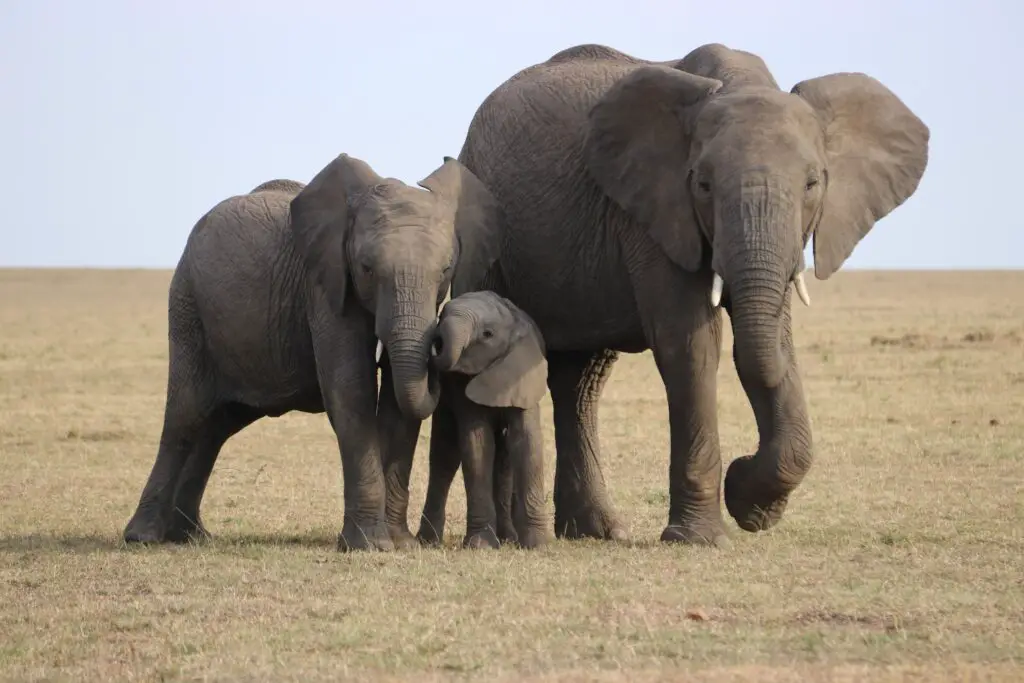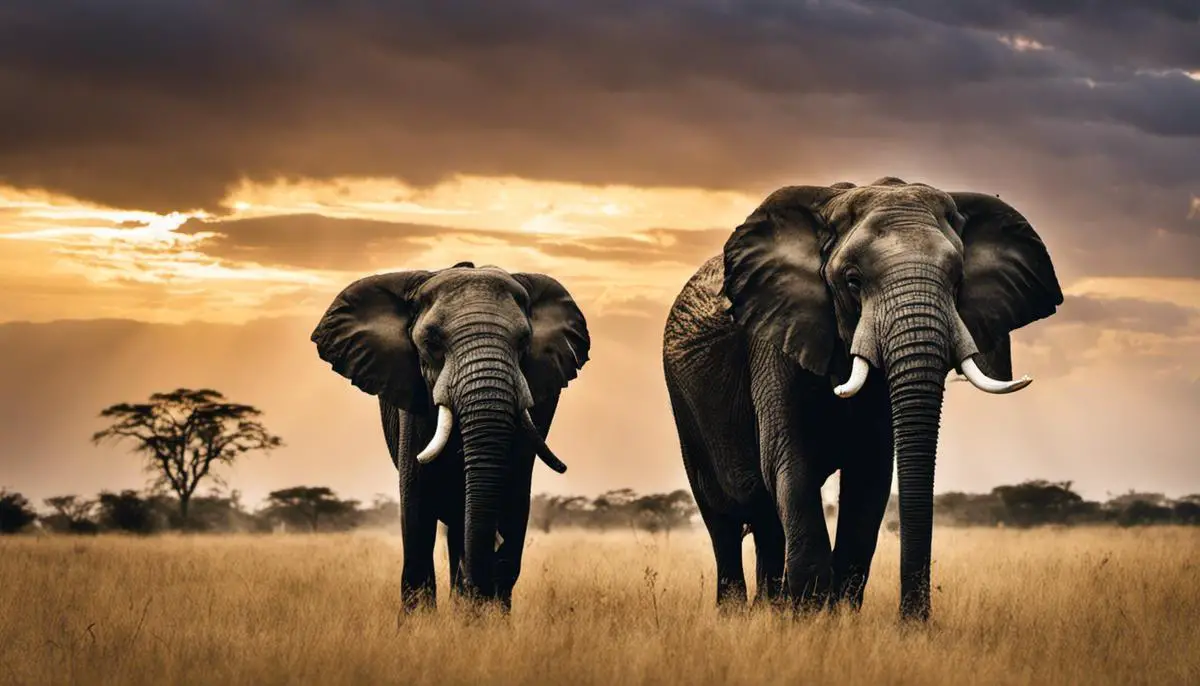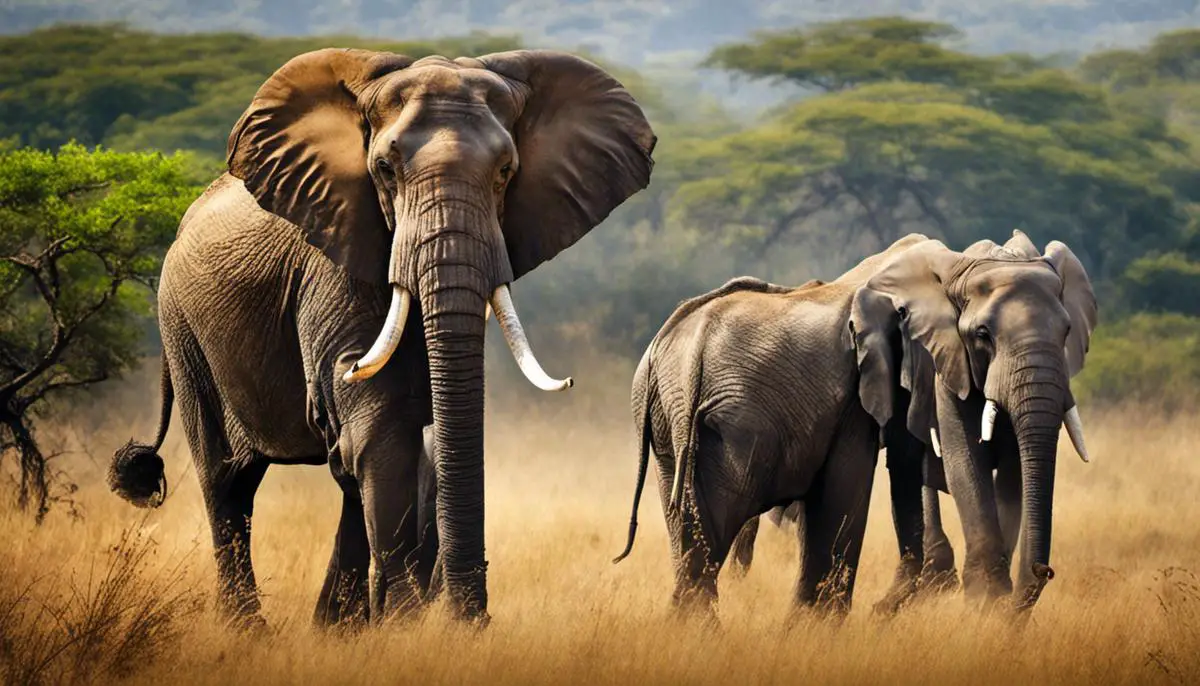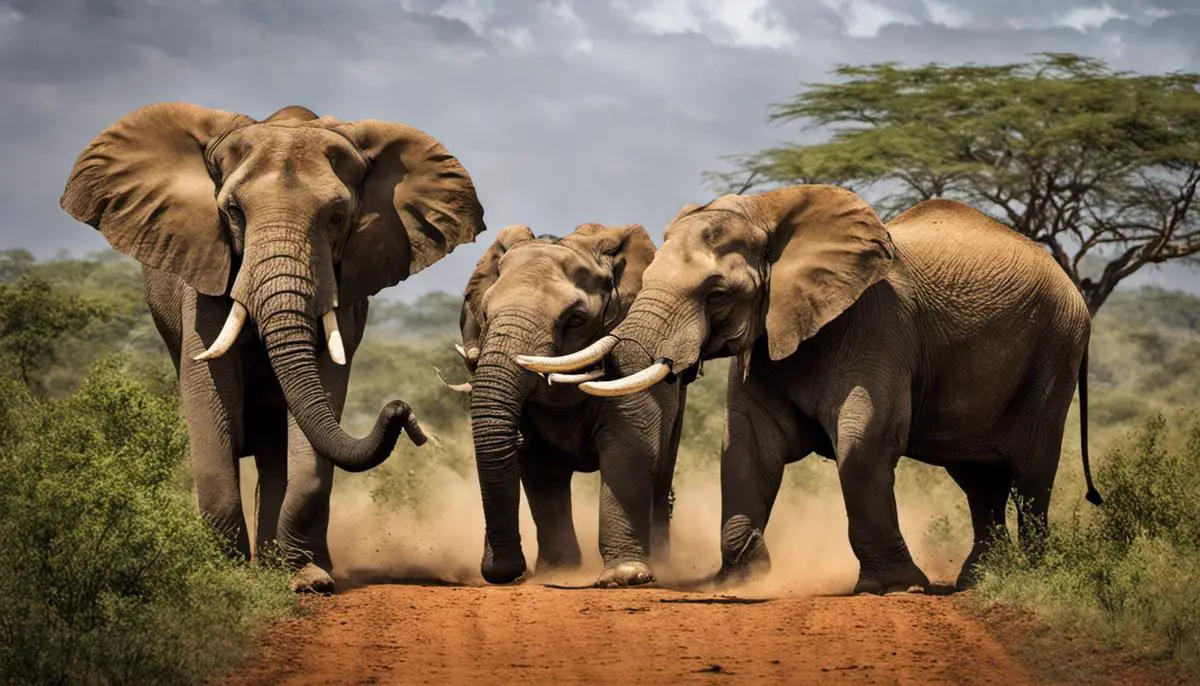Discovering the Strength of Elephants: A Deep Look into their Power
The extraordinary strength of elephants is a fascinating topic that extends far beyond the superficial understanding of these mammoth creatures as simply hefty in size. Elephants, much admired for the raw power they embody, descend from an extraordinary lineage of robust species.
Their formidable strength is not just central to their survival but is also linked to an intricate combination of physical characteristics. Contemplating these traits, such as their thick-skinned physique, prodigious musculature, and notable features like tusks and a singularly versatile trunk, offers a compelling narrative of evolved might.
Furthermore, it is not merely in the realm of their fellow giants that their might is appreciable but in contextual perspective with a broad spectrum of different species that one can truly appreciate the elephant’s admirable strength.

Physical Attributes Contributing to an Elephant’s Strength
Understanding the Innate Strength of Elephants
Elephants are famed for their immense strength, and this can largely be credited to their massive size and uniquely structured anatomy. Adult African elephants, the largest land animals, have been known to weigh up to an incredible 12,000 kg and measure up to 4 metres at the shoulder. Their size alone gives them a significant advantage, granting them immense power and the ability to carry out physically daunting tasks such as uprooting trees and moving heavy logs. However, it’s not just the size of the elephant that contributes to its strength. Their skeletal structure, particularly their long and strong leg bones, help support their massive weight, whilst their robust spine, which is curved in the opposite direction to that of humans, provides stability and flexibility, which is crucial for their great lifting and carrying capacities.
Unveiling Power: Trunks, Tusks, and Beyond
As one of the most formidable beings in the animal kingdom, elephants boast an impressive array of tools that reflect their magnificent strength. Take their versatile trunk, for example, a powerhouse of around 40,000 individual muscles that masterfully balances flexibility with force. Not only can it lift hefty weights, but it is also sufficiently precise to handle delicate items with care. Alongside this, an elephant’s tusks and elongated incisor teeth are a force to be reckoned with, enabling lifting, pushing, and even combat. Their robust hide, reaching up to a thickness of 2.5 cm, coupled with layers of subcutaneous fat and connective tissue, provides formidable armor, giving them remarkable resistance and industrious strength.

Comparative Analysis of Elephant’s Strength
Elephants: Titans of the Terrestrial Sphere
Anxiously holding the title of the largest land mammal, elephants command respect and awe with their monumental strength, which greatly outpaces other robust mammals. Bolstered by their immense size and sturdy anatomical makeup, they are often regarded as symbols of exceptional brute force in the natural order. Astonishingly, a mature elephant can carry the equivalent weight of over 130 humans, approximately 9,000 kilograms, a testament to their towering load-bearing capacity. Such unimaginable strength and stability are the products of a sophisticated muscular and skeletal structure, setting elephants in a league of their own.
Strength Comparison: Elephants versus Other Large Mammals
When juxtaposed against other large mammals, elephants certainly appear to be unparalleled in terms of sheer strength. For example, a fully mature male elephant has the ability to pull a load that weighs up to a staggering 14,000 kilograms, essentially double the force produced by draught horses. Even the African buffalo, widely considered to be among the most muscular mammals, is outmatched by the elephant’s superior muscular capabilities. When compared to even the most robust humans and primates, they fall short of the immense strength elephants contain. The combination of this exceptional physical might with their distinct intelligence cements the elephant’s position as one of the most potent species in the entire animal kingdom.

Strength Applications in Elephant Behaviour
The Display of Elephant Strength in Mating Rituals and Territorial Conflicts
Demonstrations of elephant strength become particularly prominent during mating rituals and territorial conflicts. Male elephants, or bulls, as they are commonly known, are infamous for their striking power displays during the mating season. They engage in aggressive confrontations, using their colossal tusks and their considerable weight and size to overpower their competition. This sort of behaviour is even more evident throughout a phase known as ‘musth’. During this time, testosterone levels in bull elephants can surge to 60 times their usual level, leading to a noticeable increase in both their assertiveness and strength. Additionally, elephants use their strength in a defensive capacity to maintain dominance over their territory. They expel intruding contenders and protect their herds utilizing their formidable physical power.
Strength and Foraging for Food
Similarly, an elephant’s colossal strength is also utilised in their regular quest for sustenance. With a daily intake of about 300 kilograms of food, elephants spend up to 16 hours a day feeding. To fulfill this large dietary requirement, elephants use their strength to uproot trees, rip bark off with their robust tusks, and use their powerful trunk to pick up even small objects with precision. Their trunks alone have around 40,000 individual muscles, enabling them to lift weights of up to 270 kilograms. Moreover, they have been known to knock over trees to access fruit or leaves, evidencing their raw power in their daily activity.
Elephant Interactions with Other Species
Finally, the formidable strength of an elephant is highly instrumental in its interactions with other species. This remarkable physical capability positions the elephant at the pinnacle of the animal kingdom, providing them with the aptitude to dominate resources such as water bodies and prime feeding areas. They frequently leverage their strength to safeguard themselves and their offspring from predators such as lions or hyenas. Furthermore, elephants often come into contact with humans, a relationship that can highlight their power in both beneficial and detrimental ways. It would, however, be significant to acknowledge that at times humans misuse this strength for labour or amusement. Hence, the World Wildlife Fund perpetually underscores the necessity for ethical treatment and conservation of these majestic animals.

Impact of Elephant’s Strength on Ecosystems
The Incredible Elephant Strength and Its Ecological Consequences
Elephants, revered as one of the most resilient land animals, are famously recognized for their immense strength and prodigious presence. A fully grown elephant, regardless of whether it is a larger African or comparatively smaller Asian species, can effortlessly lift a weight of approximately 300 kg using just its powerful, versatile trunk. Beyond this awe-inspiring feat of strength, their ability to carry up to 9,000 kg on their back further showcases their unbelievable power. In relation to the broader ecological perspective, this exceptional strength has both conspicuous and subtle influences on the ecosystem.
Primarily, elephants operate as unintentional architects of their environment. Their substantial body weight, coupled with their strength, enables them to navigate challenging terrain, obliterate obstacles, and even engender clearings in densely forested areas. This indifferent exhibition of phenomenal strength opens up trails for smaller animals and promotes biodiversity within their ecosystem. Secondly, their unique practise of uprooting vegetation for consumption or incidentally trampling undergrowth increases soil fertility by accelerating the decomposition process and resulting in quicker seed germination. These unintentional actions actively shape vegetation patterns and contribute significantly towards sustaining the equilibrium of the local fauna.
Influences Beyond Physical Strength
Adding to their raw physical strength, elephants’ psychological strength plays a pivotal role in their ecology too. Known for their remarkable cognitive abilities and strong group dynamics, elephants have a profound influence on social and herd dynamics. This social strength helps to manage the population ratios of other animals by indirectly monitoring the presence of predators and competition for resources, thereby affecting the ecosystem’s structure.
Furthermore, elephants, with their tremendous strength and size, come into regular contact with human populations. These encounters can range from peaceful cohabitation to direct conflicts resulting from habitat encroachments. Both positive and negative encounters have an incredible potential to reshape both human and elephant behaviors, ultimately leading to alterations in the larger ecological context.
Therefore, the true strength of elephants lies not just in their muscles but also in their ability to transform ecosystems with their habits and social dynamics. This proves that the sheer physical and psychological strengths of elephants encapsulate their ecological significance in the web of life.

Elephants, powerful and compelling, are not just symbols of raw strength; they are integral contributors to their ecosystems. The elephant’s brawn influences the environment around it, shaping landscapes, affecting plant distribution, and determining the very nature of different habitats.
The fascinating aspect of their strength lies not merely in their physical abilities; it reaches far beyond the very essence of their ecological niche. A life without these majestic beasts and the influence of their strength would lead to a drastic reshaping of ecosystems as we know them.
Thus, understanding the elephant’s strength gives us a broader understanding of the delicate balance of our natural world and its interconnected complexities. Learning about an elephant’s light reveals a world of interaction and influence that is constantly unfolding in the wild landscapes these creatures regulate with their strength.
